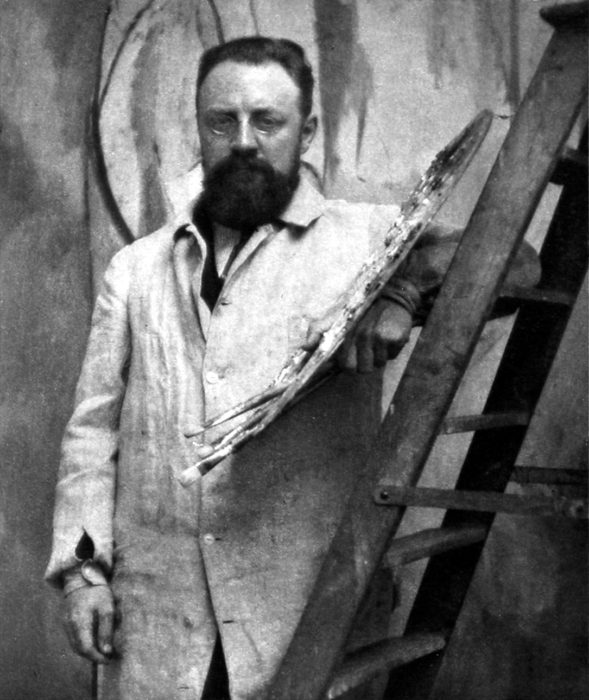
- On 1 September 2018
- In Tangier
- Tags: Henri Matisse
Henri Matisse in Tangier
Henri Matisse saw Tangier as an earthly paradise. The artist visited the city twice, in 1912 and 1913, in search of a new direction for his art, and found inspiration for his greatest works in the bright African light, vivid colors and languid sensuality of the Moroccan landscape and architecture, the gardens and the people.
Henri Matisse did most of his paintings in Tangier’s Kasbah, or fortress, and in the medina, or medieval walled city. “He found what he wanted there,” said Jack Cowart, curator of 20th-century art at the National Gallery. “Besides, Matisse really didn’t like to travel farther than about a 400-yard radius from his hotel. He always had so much baggage to move about: canvases, stretchers, paints.”
Often Matisse simply stayed in his hotel room to paint. When he first arrived in Tangier in January 1912, bad weather kept him inside. He sent a grumpy postcard to Gertrude Stein informing her that for five days “it had rained incessantly.” So he set a vase on his hotel dresser and painted “Vase of Irises.” That work anticipated the many hotel interiors he later painted in Nice, France.
But it was the view painted from his hotel in his famous “Landscape Viewed From a Window” that I wanted most to see.
During both of his several-month visits to Tangier, Matisse stayed at the Grand Hotel Villa de France. It sits apart on a promontory high above the modern center of town with its wide boulevards and smart shops.
In the kasbah is the Dar el Makhzen, a former royal palace, now a museum, where Matisse presumably studied the beautiful tile work, wandered in the garden and absorbed the Islamic atmosphere. It was a new, exotic world. Its impact, according to Cowart, was “the hinge” between Matisse’s earlier European fauvist style and his more original, powerful later work.
Henri Matisse probably found his colorfully dressed models, both male and female, in the souks or markets, where today Riffian tribesmen stride through the crowded lanes in striped djellabas, and Berber tribal women in wide-brimmed, conical straw hats topped with pompoms carry their babies on their backs.
For the outsider, wandering through Tangier’s streets of flat facades is like being in the desert, looking at blank walls that one knows enclose lush oases. Hidden by monochrome exteriors are richly decorated interiors. Plain outside, patterned inside.
During the walking tour of Tangier our guests would follow ”The route of Matisse”

